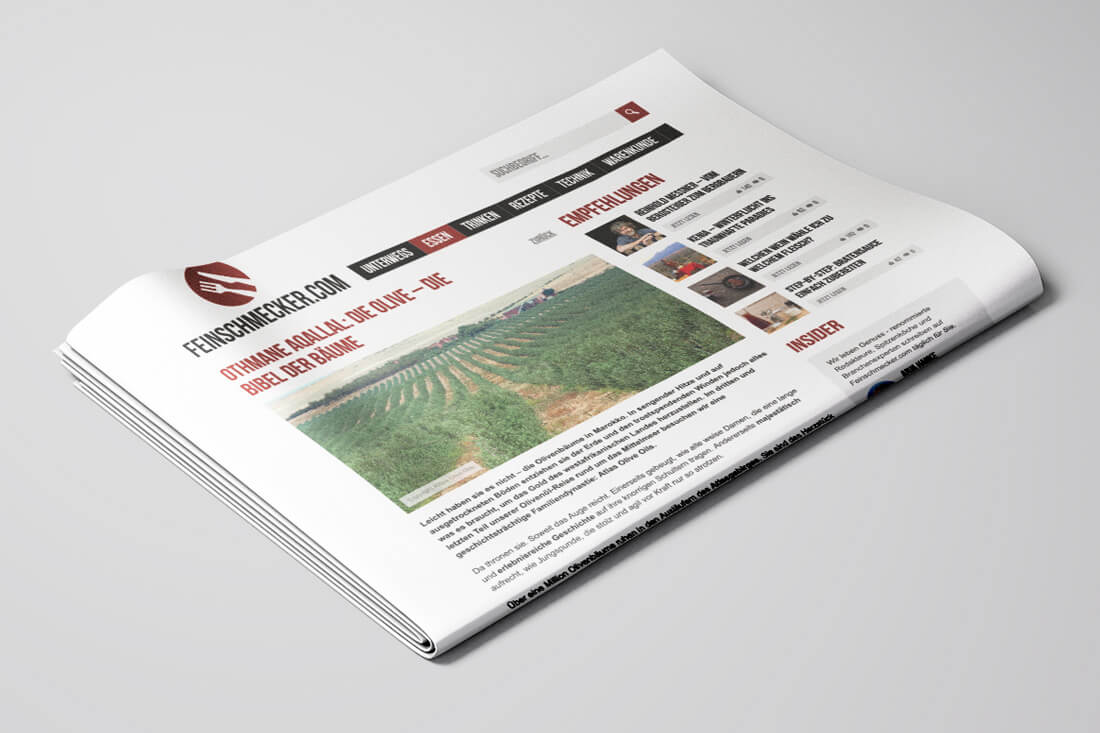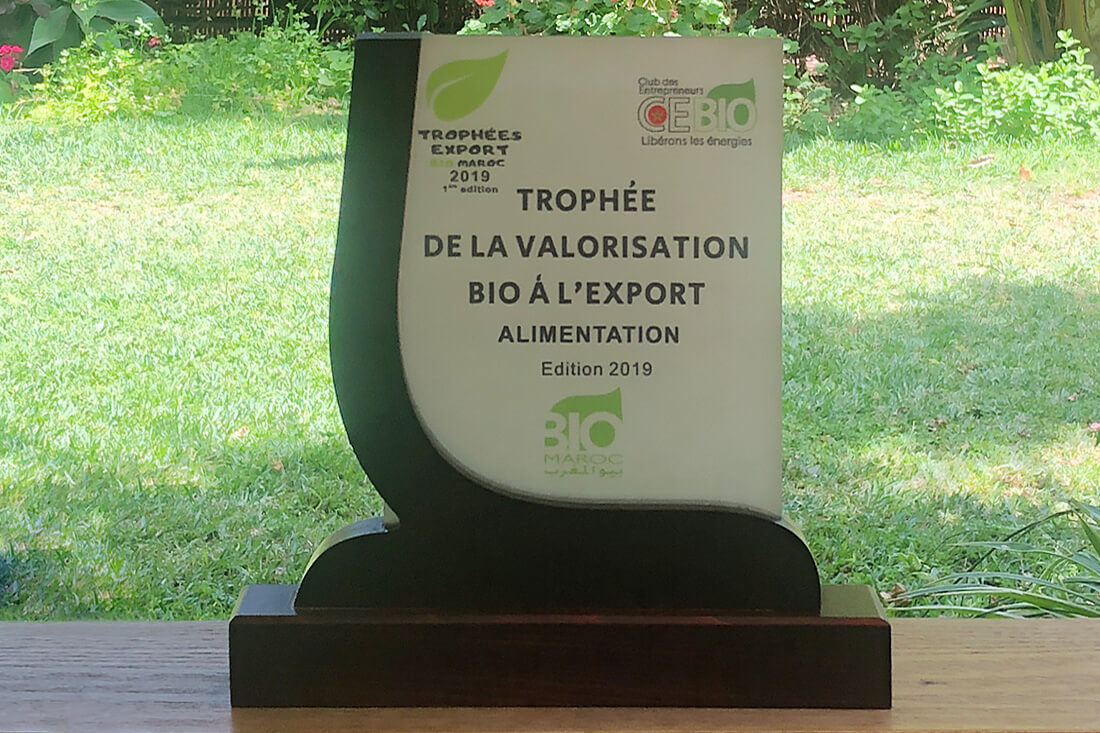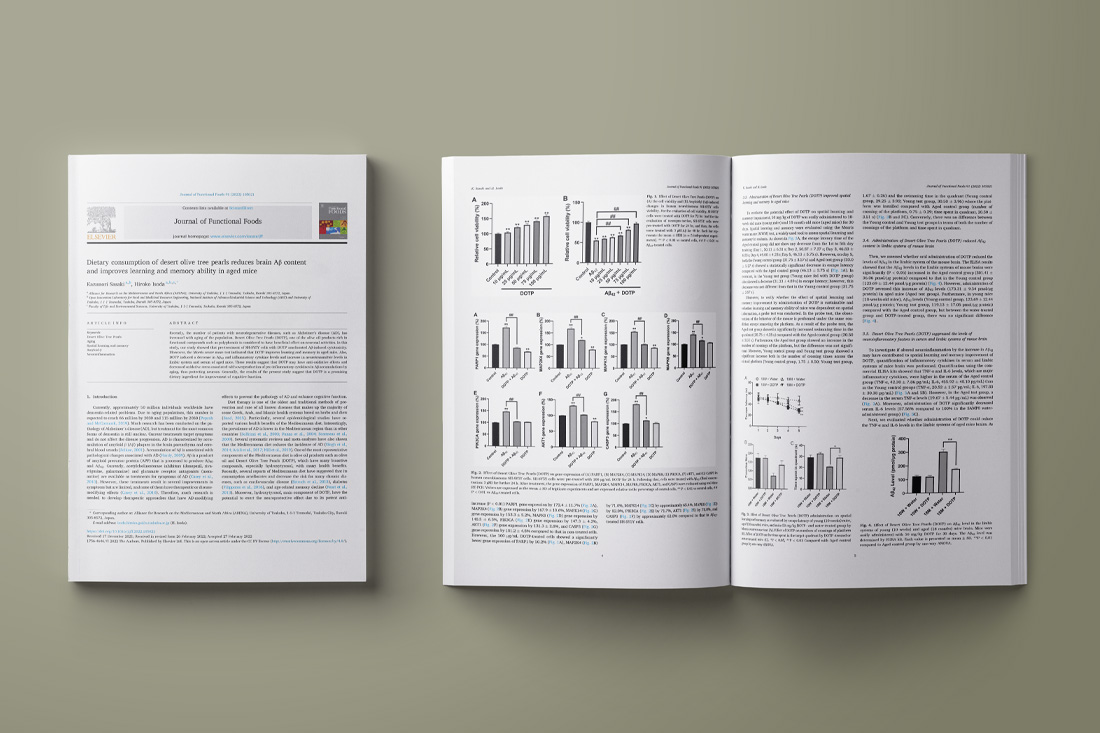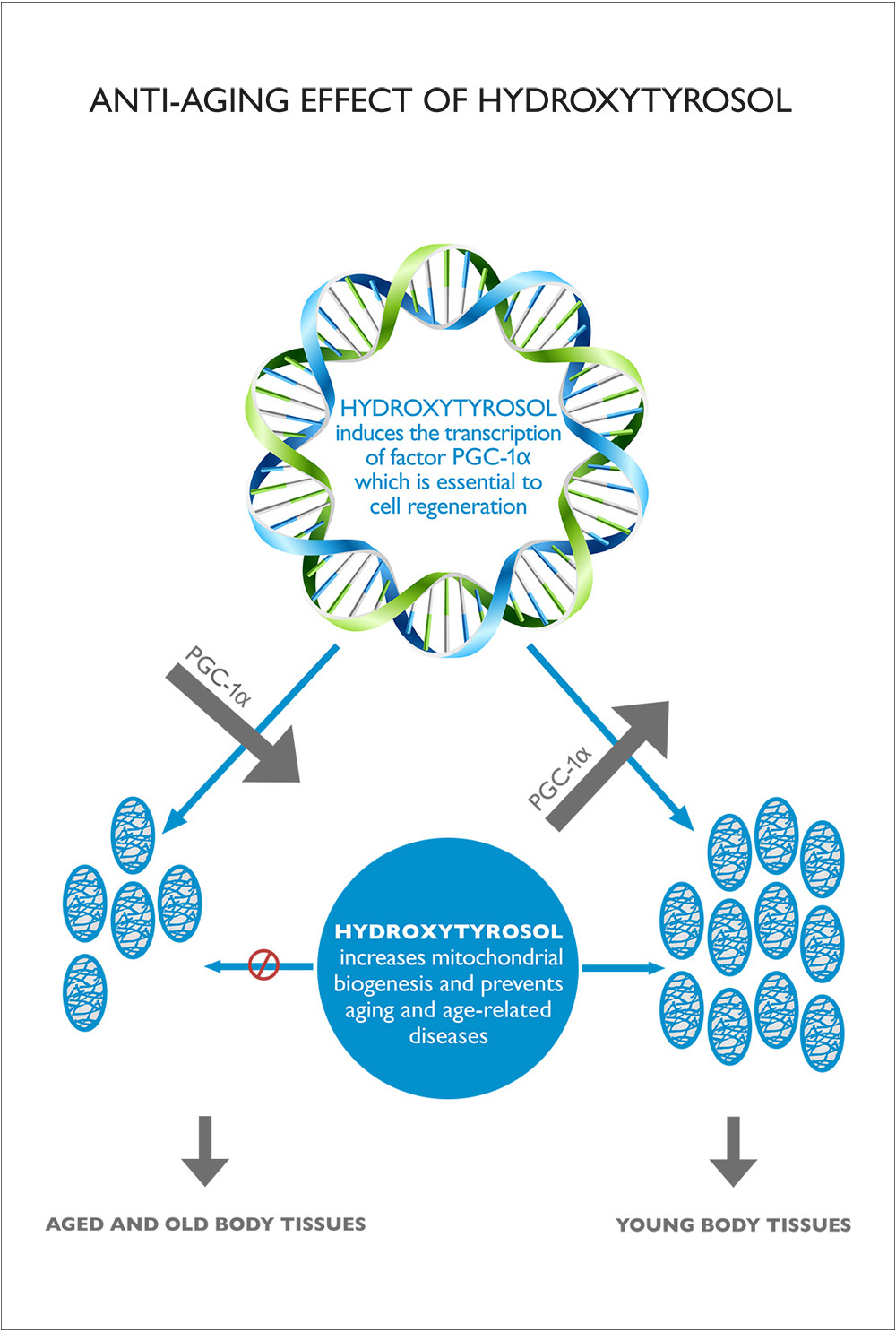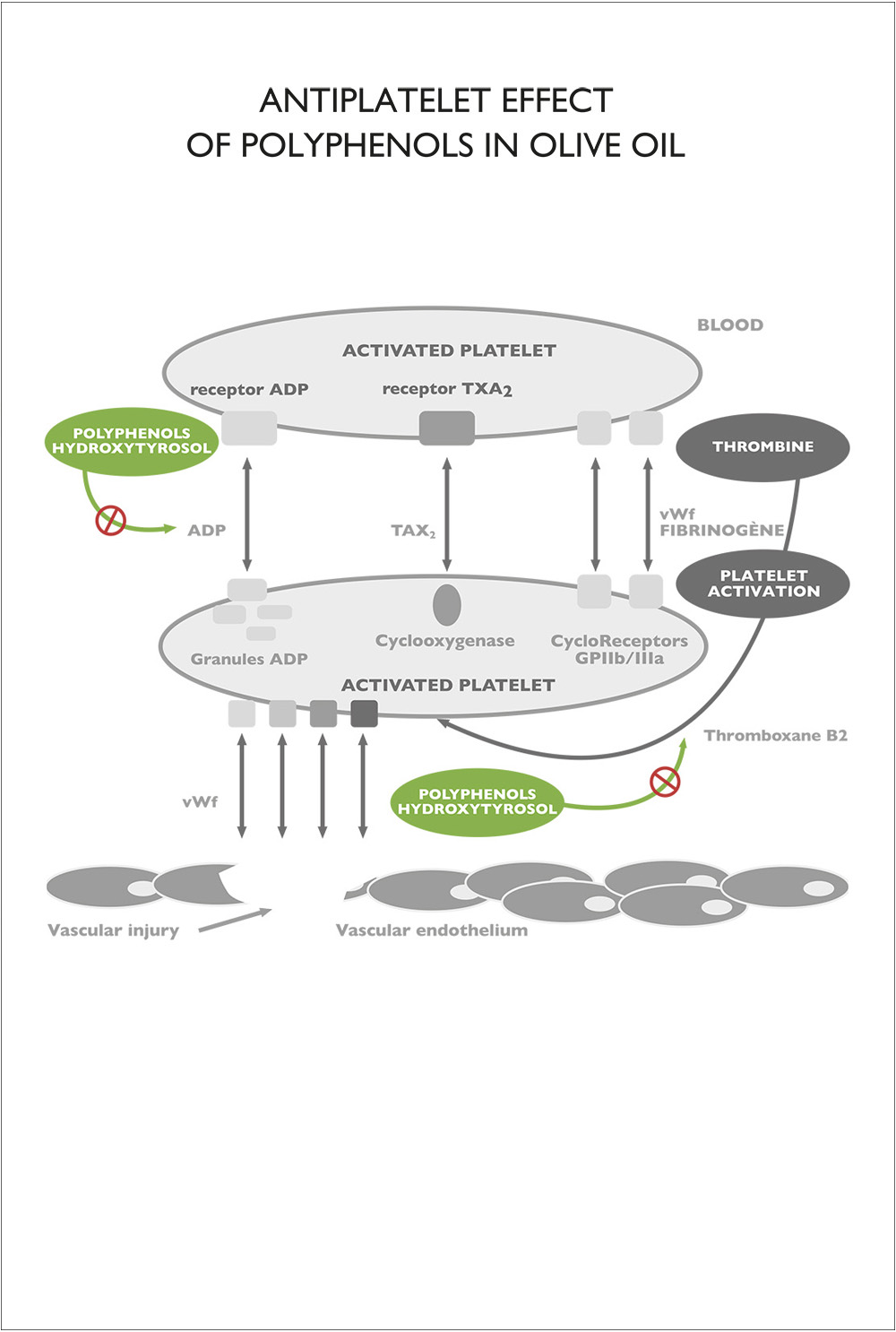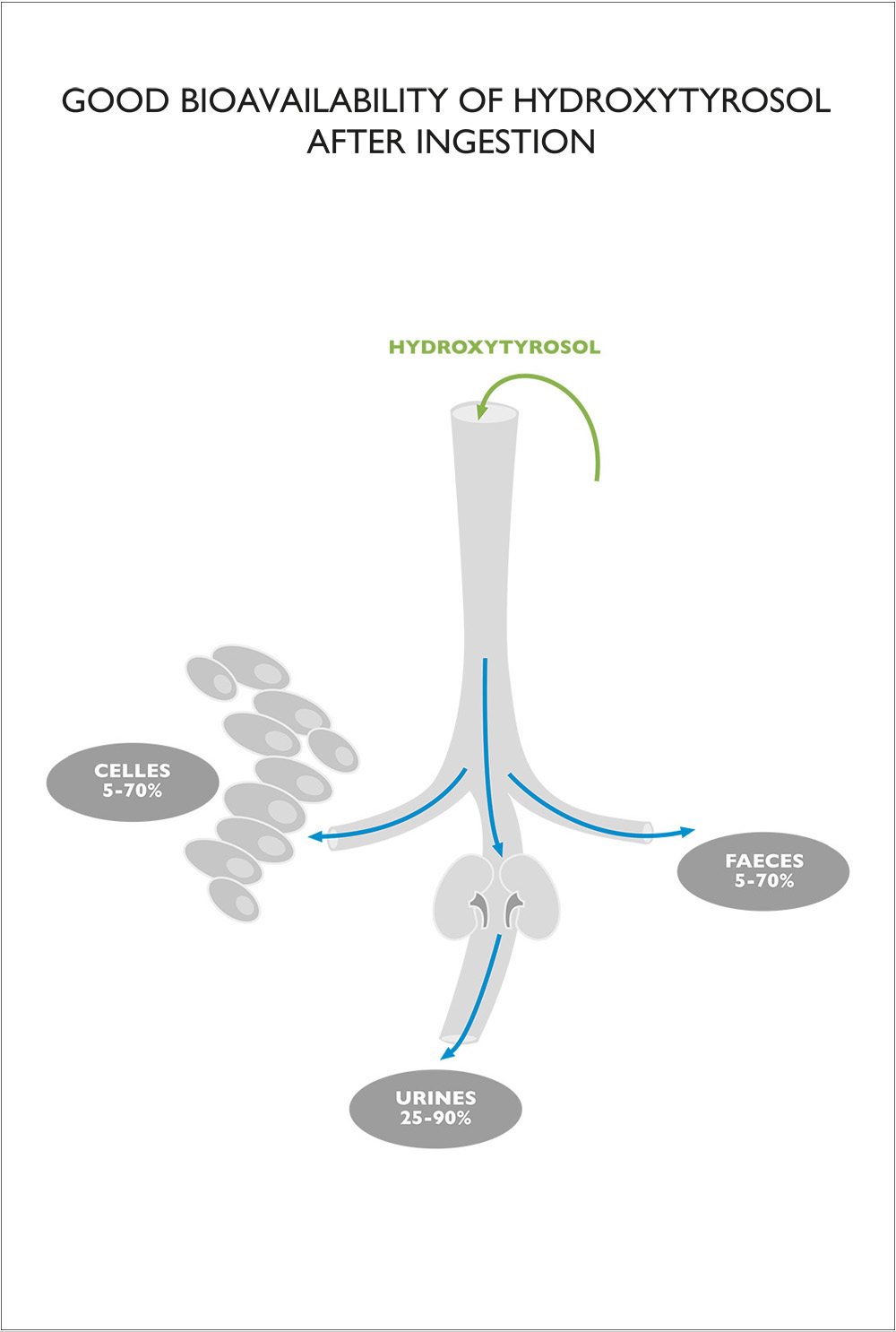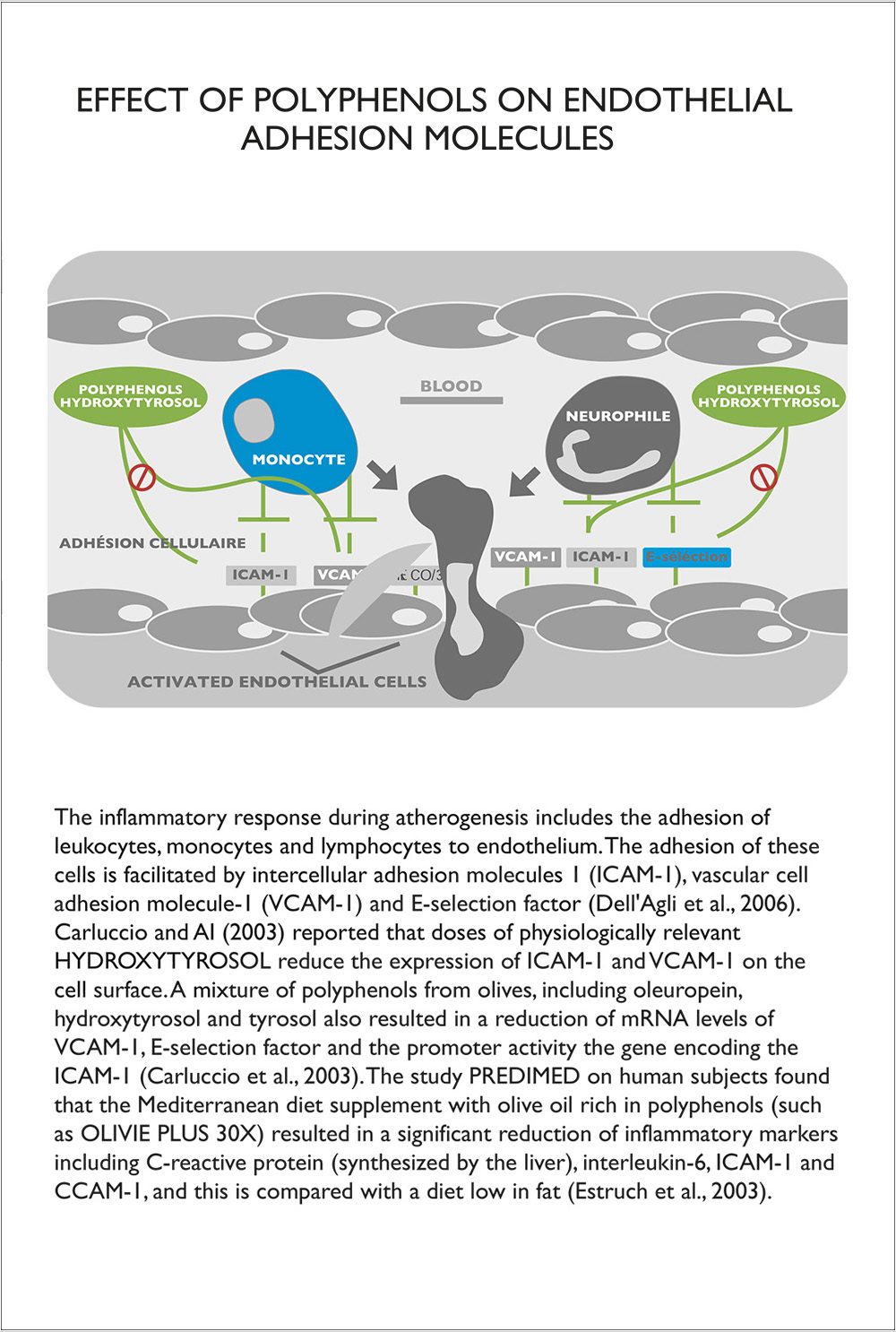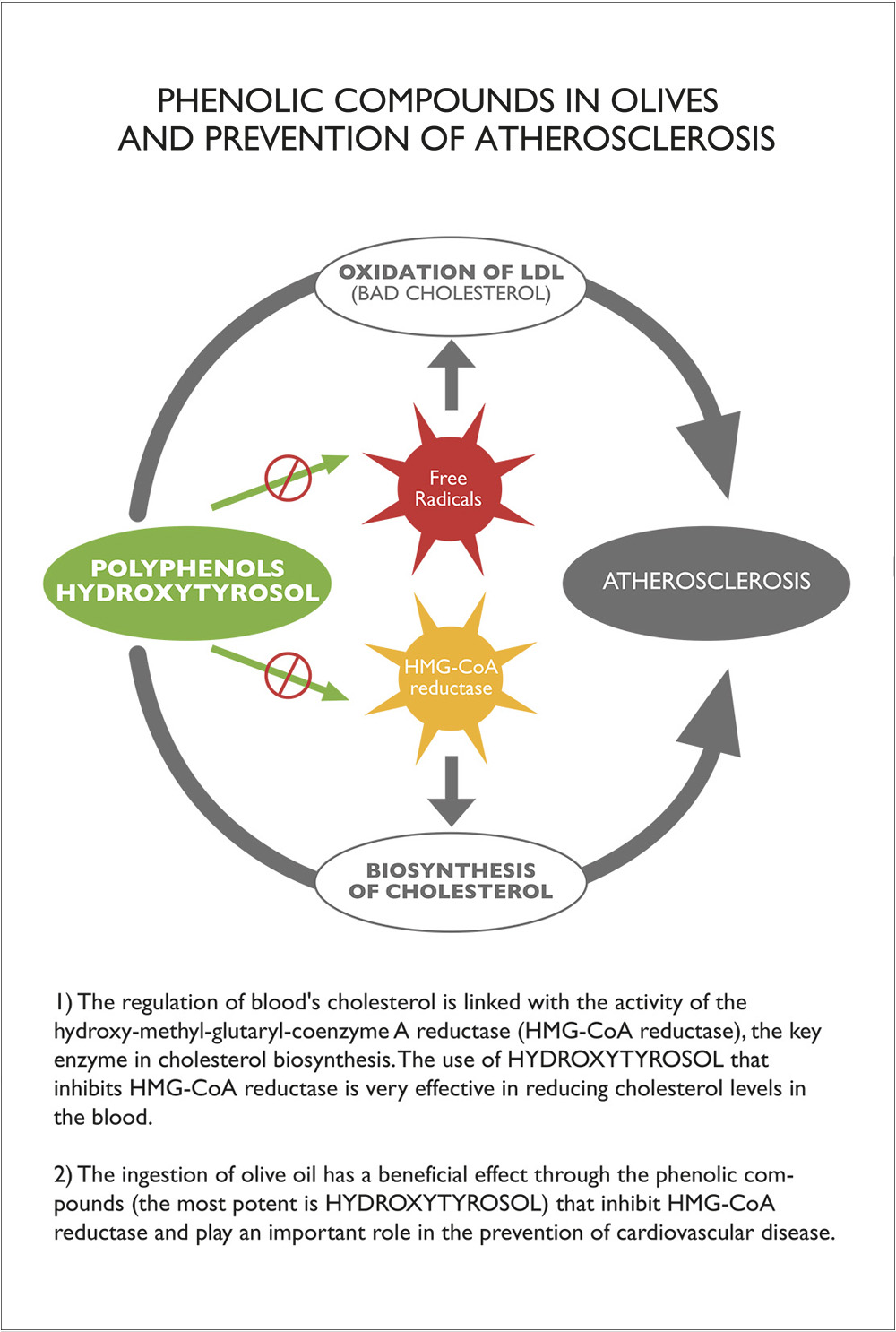
OIL & HEALTH
``I tasted this golden oil, it suits all family and friendly menus. I will prescribe it largely without a prescription and insistently in my job as oncologist.``
Pr Henri Joyeux
The olive oil produced in a rocky desert of the Moroccan Atlas is very healthy. Compared to all other oils from around the Mediterranean and beyond, OLIVIE Plus 30X contains 30 times more polyphenols little known: Tyrosol and Hydroxytyrosol to a rate never measured before in a food: 30 times (240 mg / kg) compared to a conventional extra virgin olive oil (8 mg / kg). Preventing Alzheimer’s, preventing premature aging of our body cells and organs, preventing cancer, preventing heart disease, excess of cholesterol, stroke… Shortly said: staying healthy for the next century we are given, it is our greatest wish.
Professor Henri Joyeux – Oncologist Surgeon – Specialist in International Nutrition Prevention – Faculty of Medicine of Montpellier
The following tab summarizes the main health benefits one can get from this naturally rich olive oil in powerful polyphenols. It can help any doctor to prescribe OLIVIE like a bio-medicine to their patients.
Symptom
Hypertension
Biological effect
Hydroxytyrosol is an antihypertensive. Besides increasing coronary flow it is also anti-arrhythmic… The Hydroxytyrosol regulates the metabolism of lipids (cholesterol and triglycerides), while lowering the rate of the blood lipoproteins of low molecular weight LDL (bad cholesterol). This decrease is mainly due to cholesterol inhibition by hydroxytyrosol the enzyme HMG-CoA reductase, a key enzyme in the biosynthesis of cholesterol.
References
36 à 37
Symptom
Cardiovascular System
Biological effect
Olive oil rich in polyphenols allows the prevention and treatment of cardiovascular diseases. In effect, polyphenols from olive oil:
– Promote the reduction of the presence of cell adhesion molecules,
– Increase the availability of nitric oxide,
– Suppress platelet aggregation,
– Stimulate endogenous antioxidants to retard LDL arteriosclerosis,
– Reduce inflammatory reactions.
References
17 à 32
Symptom
Toxicity
Biological effect
The phenolic compounds of olive oil are not toxic and absorption depends on the dose. These compounds are highly bioavailable as natural components of olive oil.
References
1 à 5
Symptom
Anti ageing
Biological effect
– Hydroxytyrosol, powerful phenolic compound of olive oil, increases the production of mitochondria. The high number of mitochondria in the cell is an indicator of cell youth and body healthy.
– Hydroxytyrosol induces the expression of several proteins related to cardiac cells.
References
12 à 13
Symptom
Cancer
Biological effect
– Hydroxytyrosol and polyphenols of olive oil are potent protective agents against cancer. These natural compounds are also excellent substances for the treatment of cancer.
– Hydroxytyrosol and olive polyphenols inhibit the proliferation and induce apoptosis of cancer cells.
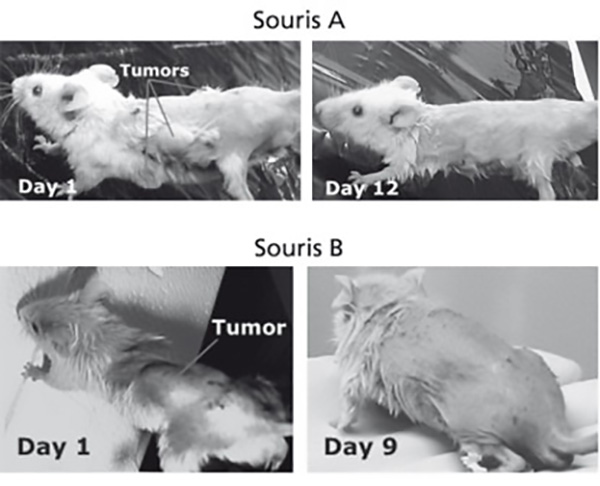
References
6 à 11
Symptom
Antioxydant power
Biological effect
Olive oil contains more highly protective antioxidant substances than red wine, green tea and vitamin C. Free radicals are trapped efficiently by polyphenols of olive oil which explains their high antioxidant power.
References
6 à 11
Symptom
Antimicrobial effect
Biological effect
Hydroxytyrosol and olive polyphenols have a bactericidal and / or bacteriostatic acting on a range of pathogenic bacteria, and their effect against fungi.
References
33 à 34
Symptom
Endocrine
Biological effect
Olive polyphenols are effective against hyperglycemia and may play a role in the prevention and treatment of diabetic complications associated with oxidative stress.
References
35
Symptom
Nervous System and Alzheimer
Biological effect
Hydroxytyrosol and olive polyphenols contribute to the prevention of Alzheimer’s disease by different molecular mechanisms.
References
36
Symptom
Psoriasis
Biological effect
Hydroxytyrosol and olive polyphenols make Psoriasis disappear through oral treatment between 2 to 6 months.
References
foragen.com
Symptom
AIDS
Biological effect
Oleuropein and hydroxytyrosol are the useful agents to inhibit the fusion and integration of HIV in the human cells.
References
14
Scientific and medical studies
1. Tuck KL, Freeman MP, Hayball PJ, Stretch GL, Stupans I (2001). The in vivo fate of hydroxytyrosol and tyrosol, antioxidant phenolic constituents of olive oil, after intravenous and oral dosing of labeled compounds to rats. Journal of Nutrition. 131 : 1993–1996.
2. Caruso D, Visioli F, Patelli R., Galli C, Galli G (2001). Urinary excretion of olive oil phenols and their metabolites in humans. Metabolism. 50 : 1426–1428.
3. Bonanome A, Pagnan A, Caruso D, Toia A, Xamin A, Fedeli E, Berra B, Zamburlini A, Ursini F, Galli G, (2000). Evidence of postprandial absorption of olive oil phenols in humans. Nutrition, Metabolism and Cardiovascular Diseases. 10 : 111–120.
4. Visioli F, Caruso D, Plasmati E, Patelli R, Mulinacci N, Romani A, Galli G, Galli C (2001). Hydroxytyrosol, as a component of olive mill waste water, is dose-dependently absorbed and increases the antioxidant capacity of rat plasma. Free Radical Research. 34 : 301– 305.
5. Manna C, Galletti P, Maisto G, Cucciolla V, Dangelo S, Zappia V (2000). Transport mechanism and metabolism of olive oil hydroxytyrosol in Caco-2 cells. FEBS Letters. 470 : 341–344.
6. Edwin N. Frankel (2011). Nutritional and biological properties of extra virgin olive oil. J. Agric. Food Chem.
7. Haiwell B, Gutteridge JMC (1999). Free Radicals in Biology and Medicine. Oxford University Press, Oxford.
8. Visioli F, Bellomo G, Montedoro GF, Gallic (1995a). Low density lipoprotein oxidation is inhibited in vitro by olive oil constituents. Atherosclerosis. 117 : 25–32.
9. Visioli F, Galli C (1998). The effect of minor constituents of olive oil on cardiovascular disease : new findings. Nutr Rev. 56 : 142– 147.
10. Aruoma OI, Deiana M, Jenner A, Halliwell B, Harparkash K, Banni S, Corongiu FF, Dessi MA, Aeschbach R (1998). Effect of hydroxytyrosol found in extravirgin olive oil on DNA damage and on low-density lipoprotein oxidation. Journal of Agricultural and Food Chemistry. 46: 5181–5187.
11. Keceli T, Gordon MH (2001). The antioxidant activity and stability of the phenolic fraction of green olives and extra virgin olive oil. Journal of the Science of Food and Agriculture. 81 : 1391–1396.
12. Mukherjee S, Lekli I, Gurusamy N, Bertelli AAA, Das DK (2009). Expression of the longevity proteins by both red and white wines and their cardioprotective components, resveratrol, tyrosol, and hydroxytyrosol. Free Radical Biology & Medicine. 46 : 573–578.
13. Raederstorff D, Wang-schmidt Y, Wertz K (2010). Use of hydroxytyrosol as anti-aging agent. Pub. No. : US 2010/0130621 A1.
14. Lee-Huang S, Zhang L, Huang PL, Chang YT (2003). Anti-HIV activity of olive leaf extract (OLE) and modulation of host cell gene expression by HIV-1 infection and OLE treatment. Biochem Biophys Res Commun; 307:1029–1037.
15. Hamdi KH, Castellon R (2005). Oleuropein, a non-toxic olive iridoid, is an anti-tumor agent and cytoskeleton disruptor. Biochemical and Biophysical Research Communications. 334: 769 778.
16. Han J, Talorete TP, Yamada P, Isoda H (2009). Anti-proliferative and apoptotic effects of oleuropein and hydroxytyrosol on human breast cancer MCF-7 cells. Cytotechnology. 59:45–53.
17. Huang CL, Sumpio BE (2008). Olive oil, the Mediterranean diet, and cardiovascular health. J Am Coll Surg. 207:407–16.
18. Cominacini L, Garbin U, Cenci B, Davoli A (1991). Predisposition to LDL oxidation during copper-catalyzed oxidative modification and its relation to a-tocopherol content in humans. Clinica Chimica Acta. 204: 57–68.
19. Rice-Evans CA, Miller NJ, Paganga G (1996). StructureAantioxidant activity relationship of flavonoids and phenolic acids. Free Radical Biology and Medicine. 20: 933–956.
20. Cao G, Sofic E, Prior RL (1997). Antioxidant and prooxidant behavior of flavonoids: structure-activity relationships. Free Radical Biology and Medicine. 22: 749–760.
21. Masella R, Cantafora A, Modesti D, Cardilli A, Gennnaro L, Bocca A, Coni E (1999). Antioxidant activity of 3, 4-DHPEA-EA and protocatechuic acid: a comparative assessment with other olive oil biophenols. Redox Report. 4: 113–121.
22. Halliwell B (1997). Antioxidants and human disease : a general introduction. Nutrition Reviews. 55, 44–52.
23. Leenen R, Roodenburg AJ, Vissers MN, Schuurbiers JA, van Putte KP, Wiseman SA , van de Put FH (2002). Supplementation of plasma with olive oil phenols and extracts: influence on LDL oxidation. Journal of Agricultural and Food Chemistry. 50: 1290–1297.
24. Benkhalti F, Prost J, Paz E, Perez-Jimenez F, El Modafar C, El Boustani E (2002). Effects of feeding virgin olive oil or their polyphenols on lipid of rat liver. Nutrition Research. 22: 1067–1075.
25. Dell’Agli M, Maschi O, Galli G (2007). Inhibition of platelet aggregation by olive oil phenols via cAMP phosphodiesterase. Br J Nutr. 11:1–7.
26. Esposito K, Marfella R, Ciotola M, (2004). Effect of a Mediterranean style diet on endothelial dysfunction and markers of vascular inflammation in the metabolic syndrome: a randomized trial. JAMA. 292:1440–1446.
27. Dell’Agli M, Fagnani R, Mitro N (2006). Minor components of olive oil modulate proatherogenic adhesion molecules involved in endothelial activation. J Agric Food Chem. 54: 3259–3264.
28. Carluccio M, Siculella L, Ancora M, (2003). Olive oil and re d wine antioxidant polyphenols inhibit endothelial activation: antiatherogenic proper ties of Mediterranean diet phytochemicals. Ar terioscler Thromb Vasc Biol. 23:622–629.
29. Estruch R, Mar tinez-Gonzalez M, Corella D (2006). Effects of a Mediterranean-style diet on cardiovascular risk factors. Ann Int Med. 145:1–11.
30. de Groot E, Hovingh G, Wiegman A, (2004). Measurement of ar terial wall thickness as a surrogate marker for atherosclerosis. Circulation. 109: III33–III38.
31. Buil-Cosiales P, Irimia P, Berrade N, (2008). Carotid intima-media thickness is inversely associated with olive oil consumption. Atherosclerosis. 196:742–748.
32. Psaltopoulou T, Naska A, Ofranos P (2004). Olive oil, the Mediterranean diet, and arterial blood pressure: the Greek European Prospective Investigation into Cancer and Nutrition (EPIC) study. Am J Clin Nutr. 80: 1012–1018.
33. Capasso R, Evidente A, Schivo L, Orru G, Marcialis MA, Cristinzio G (1995). Antibacterial polyphenols from olive oil mill waste waters. Journal of Applied Bacteriology. 79: 393–398.
34. Bisignano G, Tomaino A, Lo Cascio R, Crisafi G, Uccella N, Saija A (1999). On the in-vitro antimicrobial activity of oleuropein and hydroxytyrosol. Journal of Pharmacy and Pharmacology. 51: 971–974.
35. Hamden K, Carreau S, Lajmi S, Aloulou D, kchaou D, Elfeki A (2008). Protective effect of 1,7-estradiol on hyperglycemia, stress oxidant, liver dysfunction and histological changes induced by alloxan in male rat pancreas and liver. Steroids. 94: 495–501.
36. Daccache A, Lion C, Sibille N, Gerard M, Slomianny C, Lippens G, Cotelle P (2011). Oleuropein and derivatives from olives as Tau aggregation inhibitors. Neurochemistry International.
37. Somova L.I, Shode, F.O, Ramnanan P, Nadar A (2003). Antihypertensive, antiatherosclerotic, and antioxidant activity of triterpenoids isolated from Olea europaea, subspecies africana leaves. J. Ethnopharmacol. 84, 299–305.
38. Perrinjaquet-Moccetti T, Busjahn A, Schmidlin C, Schmidt A, Bradl B, Aydogan C (2008). Food supplementation with an olive (Olea europaea L.) leaf extract reduces blood pressure in borderline hypertensive monozygotic twins. Phytother. Res. 22, 1239–1242.
